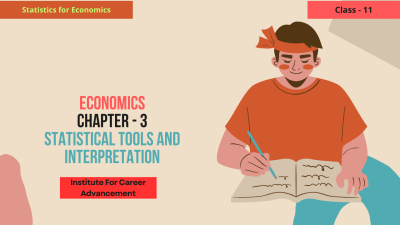Courses


 Compare
Compare
Social institutions are established patterns of behavior that govern social relationships and interactions. They provide the framework for society and shape our lives in significant ways. This course explores the concept of social institutions, their role in society, and the factors that contribute to their continuity and change. Key Topics: Definition and Types of Social Institutions: Understanding the various types of social institutions, such as family, education, religion, economy, and politics. Functions of Social Institutions: Examining the roles played by social institutions in society, including socialization, regulation, and distribution of resources. Social Change: Analyzing the factors that lead to social change, such as technological advancements, economic development, and social movements. Continuity and Change in Social Institutions: Exploring how social institutions can remain stable over time while also adapting to changing social conditions. Case Studies: Examining specific examples of social institutions and their evolution, such as the family, education system, and religious organizations. Learning Objectives: Develop a comprehensive understanding of social institutions and their role in society. Analyze the factors that contribute to the continuity and change of social institutions. Evaluate the impact of social institutions on individuals and society. Develop critical thinking and problem-solving skills related to social issues. Appreciate the diversity and complexity of social institutions across different cultures and historical periods. Social Institutions: Continuity and Change is a valuable course that provides students with a deep understanding of the fundamental structures that shape our lives. It equips them with the knowledge and skills necessary to analyze social issues, evaluate societal change, and contribute to building a better future. সামাজিক প্রতিষ্ঠানগুলি আচরণের প্রতিষ্ঠিত নিদর্শন যা সামাজিক সম্পর্ক এবং মিথস্ক্রিয়া পরিচালনা করে। এগুলি সমাজের জন্য কাঠামো সরবরাহ করে এবং আমাদের জীবনকে উল্লেখযোগ্য উপায়ে রূপ দেয়। এই কোর্সটি সামাজিক প্রতিষ্ঠানের ধারণা, সমাজে তাদের ভূমিকা এবং তাদের ধারাবাহিকতা ও পরিবর্তনে অবদান রাখার কারণগুলি অন্বেষণ করে। মূল বিষয়ঃ সামাজিক প্রতিষ্ঠানের সংজ্ঞা ও প্রকারঃ পরিবার, শিক্ষা, ধর্ম, অর্থনীতি এবং রাজনীতির মতো বিভিন্ন ধরনের সামাজিক প্রতিষ্ঠানকে বোঝা। সামাজিক প্রতিষ্ঠানের কার্যাবলীঃ সমাজে সামাজিক প্রতিষ্ঠানের ভূমিকা পরীক্ষা করা, যার মধ্যে সামাজিকীকরণ, নিয়ন্ত্রণ এবং সম্পদের বন্টন অন্তর্ভুক্ত। সামাজিক পরিবর্তনঃ প্রযুক্তিগত অগ্রগতি, অর্থনৈতিক উন্নয়ন এবং সামাজিক আন্দোলনের মতো সামাজিক পরিবর্তনের দিকে পরিচালিত করে এমন কারণগুলি বিশ্লেষণ করা। সামাজিক প্রতিষ্ঠানগুলির ধারাবাহিকতা ও পরিবর্তনঃ পরিবর্তিত সামাজিক অবস্থার সঙ্গে খাপ খাইয়ে নেওয়ার পাশাপাশি সামাজিক প্রতিষ্ঠানগুলি কীভাবে সময়ের সাথে স্থিতিশীল থাকতে পারে তা অন্বেষণ করা। কেস স্টাডিঃ পরিবার, শিক্ষা ব্যবস্থা এবং ধর্মীয় সংগঠনের মতো সামাজিক প্রতিষ্ঠান এবং তাদের বিবর্তনের নির্দিষ্ট উদাহরণগুলি পরীক্ষা করা। শেখার উদ্দেশ্যঃ সামাজিক প্রতিষ্ঠান এবং সমাজে তাদের ভূমিকা সম্পর্কে একটি ব্যাপক বোঝাপড়া গড়ে তোলা। সামাজিক প্রতিষ্ঠানের ধারাবাহিকতা ও পরিবর্তনে অবদান রাখার কারণগুলি বিশ্লেষণ করুন। ব্যক্তি ও সমাজের উপর সামাজিক প্রতিষ্ঠানের প্রভাব মূল্যায়ন করা। সামাজিক সমস্যা সম্পর্কিত সমালোচনামূলক চিন্তাভাবনা এবং সমস্যা সমাধানের দক্ষতা বিকাশ করুন। বিভিন্ন সংস্কৃতি ও ঐতিহাসিক সময়কালে সামাজিক প্রতিষ্ঠানের বৈচিত্র্য ও জটিলতার প্রশংসা করুন। সামাজিক প্রতিষ্ঠানঃ ধারাবাহিকতা এবং পরিবর্তন একটি মূল্যবান কোর্স যা শিক্ষার্থীদের আমাদের জীবনকে রূপদানকারী মৌলিক কাঠামো সম্পর্কে গভীর ধারণা প্রদান করে। এটি তাদের সামাজিক সমস্যাগুলি বিশ্লেষণ, সামাজিক পরিবর্তনের মূল্যায়ন এবং একটি উন্নত ভবিষ্যত গঠনে অবদান রাখার জন্য প্রয়োজনীয় জ্ঞান ও দক্ষতার সাথে সজ্জিত করে।
₹599
0 Lessons
Hours

 Compare
Compare
The Demographic Structure of Indian Society is a Class 12 course that focuses on the population characteristics of India. It examines various aspects of India's demographics, including population growth, age structure, sex ratio, literacy rates, and urbanization. Key Topics: Population Growth: Trends in population growth, including birth rates, death rates, and fertility rates. Age Structure: The distribution of the population by age groups, including young, working-age, and elderly populations. Sex Ratio: The ratio of males to females in the population. Literacy Rates: The percentage of the population that can read and write. Urbanization: The growth of cities and towns, and the shift of people from rural to urban areas. Population Policies: Government policies aimed at controlling population growth and improving the quality of life. Learning Objectives: Understand the demographic trends in India. Analyze the implications of population growth and age structure. Evaluate the impact of urbanization on Indian society. Examine the challenges and opportunities associated with India's demographic transition. Develop critical thinking and problem-solving skills related to population issues. The Demographic Structure of Indian Society is a valuable course that provides students with a comprehensive understanding of India's population dynamics. It equips them with the knowledge and skills necessary to analyze population-related issues and their implications for the country's development. দ্য ডেমোগ্রাফিক স্ট্রাকচার অফ ইন্ডিয়ান সোসাইটি হল দ্বাদশ শ্রেণির একটি কোর্স যা ভারতের জনসংখ্যার বৈশিষ্ট্যের উপর দৃষ্টি নিবদ্ধ করে। এটি জনসংখ্যা বৃদ্ধি, বয়সের কাঠামো, লিঙ্গ অনুপাত, সাক্ষরতার হার এবং নগরায়ণ সহ ভারতের জনসংখ্যার বিভিন্ন দিক পরীক্ষা করে। মূল বিষয়ঃ জনসংখ্যা বৃদ্ধিঃ জন্মের হার, মৃত্যুর হার এবং প্রজনন হার সহ জনসংখ্যা বৃদ্ধির প্রবণতা। বয়সের কাঠামোঃ তরুণ, কর্মক্ষম এবং বয়স্ক জনসংখ্যা সহ বয়সের গ্রুপ অনুসারে জনসংখ্যার বন্টন। লিঙ্গ অনুপাতঃ জনসংখ্যার মধ্যে পুরুষ ও নারীর অনুপাত। সাক্ষরতার হারঃ জনসংখ্যার যে শতাংশ পড়তে ও লিখতে পারে। নগরায়নঃ শহর ও শহরগুলির বৃদ্ধি এবং গ্রামীণ থেকে শহুরে অঞ্চলে মানুষের স্থানান্তর। জনসংখ্যা নীতিঃ জনসংখ্যা বৃদ্ধি নিয়ন্ত্রণ এবং জীবনযাত্রার মান উন্নয়নের লক্ষ্যে সরকারি নীতি। শেখার উদ্দেশ্যঃ ভারতের জনতাত্ত্বিক প্রবণতা বুঝুন। জনসংখ্যা বৃদ্ধি এবং বয়সের কাঠামোর প্রভাব বিশ্লেষণ করুন। ভারতীয় সমাজে নগরায়ণের প্রভাব মূল্যায়ন করুন। ভারতের জনতাত্ত্বিক পরিবর্তনের সঙ্গে যুক্ত চ্যালেঞ্জ এবং সুযোগগুলি পরীক্ষা করুন। জনসংখ্যার সমস্যা সম্পর্কিত সমালোচনামূলক চিন্তাভাবনা এবং সমস্যা সমাধানের দক্ষতা বিকাশ করুন। দ্য ডেমোগ্রাফিক স্ট্রাকচার অফ ইন্ডিয়ান সোসাইটি একটি মূল্যবান কোর্স যা শিক্ষার্থীদের ভারতের জনসংখ্যার গতিশীলতা সম্পর্কে ব্যাপক ধারণা প্রদান করে। এটি তাদের জনসংখ্যা-সম্পর্কিত সমস্যা এবং দেশের উন্নয়নে তাদের প্রভাব বিশ্লেষণের জন্য প্রয়োজনীয় জ্ঞান ও দক্ষতায় সজ্জিত করে।
₹599
0 Lessons
Hours

 Compare
Compare
Introducing Indian Society is a Class 12 course designed to provide students with a comprehensive understanding of the diverse social, cultural, and historical aspects of Indian society. It aims to foster critical thinking, empathy, and a sense of belonging to the Indian nation. Key Topics: Indian History: A brief overview of India's ancient, medieval, and modern history, focusing on significant events, cultural developments, and social changes. Indian Geography: An exploration of India's diverse geographical features, including its physical landscape, climate, and natural resources. Indian Culture: A study of India's rich cultural heritage, encompassing its languages, religions, arts, music, literature, and traditions. Social Structure: An analysis of the social structure of Indian society, including caste, class, gender, and tribal communities. Economic Development: An examination of India's economic history, challenges, and opportunities. Political System: A study of India's democratic system, including its constitution, government structure, and political parties. Social Issues: A discussion of contemporary social issues in India, such as poverty, inequality, education, healthcare, and environmental concerns. Learning Objectives: Develop a deep understanding of India's historical, cultural, and social context. Appreciate the diversity and complexity of Indian society. Analyze social issues and their impact on individuals and communities. Develop critical thinking and problem-solving skills. Foster empathy and respect for different cultures and perspectives. Introducing Indian Society is a valuable course that helps students develop a strong foundation in Indian studies. It equips them with the knowledge and skills necessary to engage in informed discussions about India's past, present, and future. ইন্ডিয়ান সোসাইটির পরিচয় একটি দ্বাদশ শ্রেণির কোর্স যা শিক্ষার্থীদের ভারতীয় সমাজের বিভিন্ন সামাজিক, সাংস্কৃতিক এবং ঐতিহাসিক দিকগুলি সম্পর্কে ব্যাপক ধারণা দেওয়ার জন্য ডিজাইন করা হয়েছে। এর লক্ষ্য হল সমালোচনামূলক চিন্তাভাবনা, সহানুভূতি এবং ভারতীয় জাতির সঙ্গে একাত্মতার অনুভূতি গড়ে তোলা। মূল বিষয়ঃ ভারতীয় ইতিহাসঃ ভারতের প্রাচীন, মধ্যযুগীয় এবং আধুনিক ইতিহাসের একটি সংক্ষিপ্ত বিবরণ, উল্লেখযোগ্য ঘটনা, সাংস্কৃতিক উন্নয়ন এবং সামাজিক পরিবর্তনের উপর দৃষ্টি নিবদ্ধ করে। ভারতীয় ভূগোলঃ প্রাকৃতিক প্রাকৃতিক দৃশ্য, জলবায়ু এবং প্রাকৃতিক সম্পদ সহ ভারতের বৈচিত্র্যময় ভৌগোলিক বৈশিষ্ট্যগুলির একটি অন্বেষণ। ভারতীয় সংস্কৃতিঃ ভারতের ভাষা, ধর্ম, শিল্প, সঙ্গীত, সাহিত্য এবং ঐতিহ্যকে অন্তর্ভুক্ত করে ভারতের সমৃদ্ধ সাংস্কৃতিক ঐতিহ্যের একটি অধ্যয়ন। সামাজিক কাঠামোঃ বর্ণ, শ্রেণী, লিঙ্গ এবং উপজাতি সম্প্রদায় সহ ভারতীয় সমাজের সামাজিক কাঠামোর একটি বিশ্লেষণ। অর্থনৈতিক উন্নয়নঃ ভারতের অর্থনৈতিক ইতিহাস, চ্যালেঞ্জ এবং সুযোগগুলির একটি পরীক্ষা। রাজনৈতিক ব্যবস্থাঃ সংবিধান, সরকারী কাঠামো এবং রাজনৈতিক দলগুলি সহ ভারতের গণতান্ত্রিক ব্যবস্থার একটি অধ্যয়ন। সামাজিক সমস্যাঃ দারিদ্র্য, অসমতা, শিক্ষা, স্বাস্থ্যসেবা এবং পরিবেশগত উদ্বেগের মতো ভারতের সমসাময়িক সামাজিক সমস্যাগুলির একটি আলোচনা। শিক্ষার উদ্দেশ্যঃ ভারতের ঐতিহাসিক, সাংস্কৃতিক ও সামাজিক প্রেক্ষাপট সম্পর্কে গভীর বোধগম্যতা গড়ে তোলা। ভারতীয় সমাজের বৈচিত্র্য এবং জটিলতার প্রশংসা করুন। সামাজিক সমস্যা এবং ব্যক্তি ও সম্প্রদায়ের উপর তাদের প্রভাব বিশ্লেষণ করুন। সমালোচনামূলক চিন্তাভাবনা এবং সমস্যা সমাধানের দক্ষতা বিকাশ করুন। বিভিন্ন সংস্কৃতি ও দৃষ্টিভঙ্গির প্রতি সহানুভূতি ও সম্মান গড়ে তুলুন। ভারতীয় সমাজের পরিচয় দেওয়া একটি মূল্যবান কোর্স যা শিক্ষার্থীদের ভারতীয় অধ্যয়নে একটি শক্তিশালী ভিত্তি গড়ে তুলতে সহায়তা করে। এটি তাদের ভারতের অতীত, বর্তমান এবং ভবিষ্যৎ সম্পর্কে অবহিত আলোচনায় জড়িত হওয়ার জন্য প্রয়োজনীয় জ্ঞান এবং দক্ষতার সাথে সজ্জিত করে।
₹599
0 Lessons
Hours

 Compare
Compare
Perfect competition is a market structure characterized by numerous small buyers and sellers, homogeneous products, perfect information, and no barriers to entry or exit. In a perfectly competitive market, price is determined by the intersection of supply and demand curves. Key Concepts: Perfect Competition: Characteristics, assumptions, and implications. Demand and Supply Curves: How demand and supply curves intersect to determine the equilibrium price and quantity. Equilibrium Price: The price at which the quantity demanded equals the quantity supplied. Equilibrium Quantity: The quantity of a good or service that is bought and sold at the equilibrium price. Marginal Cost: The additional cost of producing one more unit of a good or service. Marginal Revenue: The additional revenue earned from selling one more unit of a good or service. Importance of Perfect Competition: Efficiency: Perfect competition leads to efficient allocation of resources. Price Determination: In a perfectly competitive market, price is determined by market forces, not by individual firms. Innovation: Perfect competition can encourage innovation and efficiency. Simple Applications of Perfect Competition: Agricultural Markets: Many agricultural markets are considered to be perfectly competitive, with numerous small farmers and standardized products. Stock Market: The stock market is often modeled as a perfectly competitive market, with many buyers and sellers trading identical shares of stock. In Class 11, students will learn the basic concepts of perfect competition and how price is determined in such a market. They will study demand and supply curves, equilibrium price and quantity, and the implications of perfect competition. This knowledge will be essential for understanding market structures and how prices are set in different economic environments. নিখুঁত প্রতিযোগিতা হল একটি বাজার কাঠামো যা অসংখ্য ছোট ক্রেতা এবং বিক্রেতা, সমজাতীয় পণ্য, নিখুঁত তথ্য এবং প্রবেশ বা প্রস্থানের কোনও বাধা দ্বারা চিহ্নিত। একটি নিখুঁত প্রতিযোগিতামূলক বাজারে, সরবরাহ এবং চাহিদা বক্ররেখার ছেদ দ্বারা মূল্য নির্ধারিত হয়। মূল ধারণাগুলিঃ নিখুঁত প্রতিযোগিতাঃ বৈশিষ্ট্য, অনুমান এবং প্রভাব। চাহিদা ও সরবরাহের বক্ররেখাঃ ভারসাম্য মূল্য ও পরিমাণ নির্ধারণের জন্য চাহিদা ও সরবরাহের বক্ররেখা কীভাবে ছেদ করে। সামঞ্জস্য মূল্যঃ যে দামে চাহিদার পরিমাণ সরবরাহকৃত পরিমাণের সমান হয়। সামঞ্জস্যের পরিমাণঃ একটি পণ্য বা পরিষেবার পরিমাণ যা সামঞ্জস্য মূল্যে কেনা এবং বিক্রি করা হয়। প্রান্তিক খরচঃ একটি পণ্য বা পরিষেবার আরও একটি ইউনিট উৎপাদনের অতিরিক্ত খরচ। প্রান্তিক রাজস্বঃ একটি পণ্য বা পরিষেবার আরও একটি ইউনিট বিক্রি করে অর্জিত অতিরিক্ত রাজস্ব। নিখুঁত প্রতিযোগিতার গুরুত্বঃ দক্ষতাঃ নিখুঁত প্রতিযোগিতা সম্পদের দক্ষ বরাদ্দের দিকে পরিচালিত করে। মূল্য নির্ধারণঃ একটি নিখুঁত প্রতিযোগিতামূলক বাজারে, মূল্য নির্ধারণ করা হয় বাজারের শক্তি দ্বারা, পৃথক সংস্থা দ্বারা নয়। উদ্ভাবনঃ নিখুঁত প্রতিযোগিতা উদ্ভাবন এবং দক্ষতাকে উৎসাহিত করতে পারে। নিখুঁত প্রতিযোগিতার সহজ প্রয়োগঃ কৃষি বাজারঃ অনেক কৃষি বাজারকে নিখুঁত প্রতিযোগিতামূলক বলে মনে করা হয়, যেখানে অসংখ্য ক্ষুদ্র কৃষক এবং মানসম্মত পণ্য রয়েছে। শেয়ার বাজারঃ শেয়ার বাজারকে প্রায়শই একটি নিখুঁত প্রতিযোগিতামূলক বাজার হিসাবে মডেল করা হয়, যেখানে অনেক ক্রেতা এবং বিক্রেতা শেয়ারের অভিন্ন শেয়ারের লেনদেন করে। একাদশ শ্রেণিতে, শিক্ষার্থীরা নিখুঁত প্রতিযোগিতার মৌলিক ধারণাগুলি এবং এই ধরনের বাজারে কীভাবে মূল্য নির্ধারণ করা হয় তা শিখবে। তারা চাহিদা ও সরবরাহের বক্ররেখা, ভারসাম্য মূল্য ও পরিমাণ এবং নিখুঁত প্রতিযোগিতার প্রভাবগুলি অধ্যয়ন করবে। বাজারের কাঠামো এবং বিভিন্ন অর্থনৈতিক পরিবেশে কীভাবে মূল্য নির্ধারণ করা হয় তা বোঝার জন্য এই জ্ঞান অপরিহার্য হবে।
₹599
0 Lessons
Hours

 Compare
Compare
Producer behavior refers to the decisions that firms make regarding production, pricing, and resource allocation. Supply is the quantity of a good or service that producers are willing and able to offer for sale at a given price. Key Concepts: Production Function: A relationship between inputs (labor, capital, etc.) and output. Cost Analysis: The study of the costs associated with production, including fixed costs, variable costs, and total costs. Profit Maximization: The goal of firms to maximize their profits. Supply Curve: A curve showing the relationship between price and quantity supplied. Law of Supply: As the price of a good or service increases, the quantity supplied increases, ceteris paribus. Producer Surplus: The difference between the price a producer receives for a good or service and the minimum price they were willing to accept. Importance of Producer Behavior and Supply: Understanding Market Dynamics: Producer behavior and supply are key factors in determining market prices and quantities. Analyzing Firm Behavior: These concepts help us understand how firms make decisions about production, pricing, and resource allocation. Evaluating Economic Policies: Producer behavior and supply analysis can be used to evaluate the effects of government policies on firms and markets. In Class 11, students will learn the basic concepts of producer behavior and supply. They will study production functions, cost analysis, profit maximization, and the law of supply. This knowledge will be essential for understanding how firms operate and how markets function. উৎপাদকের আচরণ বলতে উৎপাদন, মূল্য নির্ধারণ এবং সম্পদ বরাদ্দের ক্ষেত্রে সংস্থাগুলি যে সিদ্ধান্ত নেয় তা বোঝায়। সরবরাহ হল একটি পণ্য বা পরিষেবার পরিমাণ যা উৎপাদনকারীরা একটি নির্দিষ্ট মূল্যে বিক্রয়ের জন্য দিতে ইচ্ছুক এবং সক্ষম। মূল ধারণাগুলিঃ উৎপাদন ফাংশনঃ ইনপুট (শ্রম, মূলধন, ইত্যাদি) মধ্যে একটি সম্পর্ক এবং আউটপুট। খরচ বিশ্লেষণঃ নির্দিষ্ট খরচ, পরিবর্তনশীল খরচ এবং মোট খরচ সহ উৎপাদনের সাথে সম্পর্কিত খরচের অধ্যয়ন। মুনাফা সর্বাধিককরণঃ সংস্থাগুলির লক্ষ্য হল তাদের মুনাফা সর্বাধিক করা। সরবরাহ বক্ররেখাঃ একটি বক্ররেখা যা সরবরাহকৃত মূল্য এবং পরিমাণের মধ্যে সম্পর্ক দেখায়। সরবরাহের নিয়মঃ কোনও পণ্য বা পরিষেবার দাম বাড়ার সাথে সাথে সরবরাহের পরিমাণও বৃদ্ধি পায়। উৎপাদক উদ্বৃত্তঃ একজন উৎপাদক কোনও পণ্য বা পরিষেবার জন্য যে মূল্য পান এবং যে ন্যূনতম মূল্য তারা গ্রহণ করতে ইচ্ছুক তার মধ্যে পার্থক্য। উৎপাদকের আচরণ ও সরবরাহের গুরুত্বঃ বাজারের গতিশীলতাকে বোঝাঃ বাজারের মূল্য এবং পরিমাণ নির্ধারণে উৎপাদকের আচরণ এবং সরবরাহ হল মূল বিষয়। দৃঢ় আচরণ বিশ্লেষণঃ এই ধারণাগুলি আমাদের বুঝতে সাহায্য করে যে সংস্থাগুলি কীভাবে উৎপাদন, মূল্য নির্ধারণ এবং সম্পদ বরাদ্দ সম্পর্কে সিদ্ধান্ত নেয়। অর্থনৈতিক নীতির মূল্যায়নঃ উৎপাদকদের আচরণ এবং সরবরাহ বিশ্লেষণ প্রতিষ্ঠান ও বাজারের উপর সরকারি নীতির প্রভাব মূল্যায়নের জন্য ব্যবহার করা যেতে পারে। একাদশ শ্রেণিতে, শিক্ষার্থীরা প্রযোজকের আচরণ এবং সরবরাহের মৌলিক ধারণাগুলি শিখবে। তারা উৎপাদন ফাংশন, খরচ বিশ্লেষণ, মুনাফা সর্বাধিককরণ এবং সরবরাহের আইন অধ্যয়ন করবে। সংস্থাগুলি কীভাবে কাজ করে এবং বাজারগুলি কীভাবে কাজ করে তা বোঝার জন্য এই জ্ঞান অপরিহার্য হবে।
₹599
0 Lessons
Hours

 Compare
Compare
Consumer equilibrium occurs when a consumer allocates their income in a way that maximizes their satisfaction or utility. This means they are consuming the combination of goods and services that gives them the most happiness or fulfillment. Demand refers to the quantity of a good or service that consumers are willing and able to buy at a given price. The demand curve shows the relationship between price and quantity demanded. Key Concepts: Utility: The satisfaction or happiness a consumer derives from consuming a good or service. Indifference Curve: A curve showing combinations of goods and services that give a consumer the same level of satisfaction. Budget Constraint: The combination of goods and services a consumer can afford given their income and prices. Marginal Utility: The additional satisfaction a consumer gets from consuming one more unit of a good or service. Law of Diminishing Marginal Utility: As a consumer consumes more of a good or service, the additional satisfaction they derive from each additional unit decreases. Consumer Surplus: The difference between what a consumer is willing to pay for a good or service and the price they actually pay. Importance of Consumer Equilibrium and Demand: Understanding Consumer Behavior: These concepts help us understand how consumers make decisions about what to buy and how much to spend. Predicting Market Outcomes: By understanding consumer demand, we can predict how markets will respond to changes in price or income. Evaluating Economic Policies: Consumer equilibrium and demand analysis can be used to evaluate the effects of government policies on consumers and markets. In Class 11, students will learn the basic concepts of consumer equilibrium and demand. They will study utility functions, indifference curves, budget constraints, and the law of diminishing marginal utility. This knowledge will be essential for understanding how consumers make choices and how markets function. ভোক্তাদের ভারসাম্য তখন ঘটে যখন একজন ভোক্তা তাদের আয় এমনভাবে বরাদ্দ করেন যা তাদের সন্তুষ্টি বা উপযোগিতা সর্বাধিক করে। এর অর্থ তারা পণ্য ও পরিষেবার সংমিশ্রণ গ্রহণ করছে যা তাদের সবচেয়ে বেশি সুখ বা পরিপূর্ণতা দেয়। চাহিদা বলতে একটি পণ্য বা পরিষেবার পরিমাণকে বোঝায় যা ভোক্তারা একটি নির্দিষ্ট দামে কিনতে ইচ্ছুক এবং সক্ষম। চাহিদার বক্ররেখা দাম এবং চাহিদার পরিমাণের মধ্যে সম্পর্ক দেখায়। মূল ধারণাগুলিঃ উপযোগিতা (ইউটিলিটি): কোনও পণ্য বা পরিষেবা গ্রহণের মাধ্যমে গ্রাহকের সন্তুষ্টি বা সুখ অর্জিত হয়। উদাসীনতা বক্ররেখাঃ এমন একটি বক্ররেখা যা পণ্য ও পরিষেবার সংমিশ্রণ দেখায় যা একজন গ্রাহককে একই স্তরের সন্তুষ্টি দেয়। বাজেটের সীমাবদ্ধতা-একজন ভোক্তার আয় ও মূল্যের পরিপ্রেক্ষিতে পণ্য ও পরিষেবার সংমিশ্রণ। প্রান্তিক উপযোগিতা (মার্জিনাল ইউটিলিটি): কোনও পণ্য বা পরিষেবার আরও একটি ইউনিট গ্রহণের ফলে একজন ভোক্তা অতিরিক্ত সন্তুষ্টি পান। প্রান্তিক উপযোগিতা হ্রাস করার আইনঃ একজন ভোক্তা যখন কোনও পণ্য বা পরিষেবার বেশি ব্যবহার করেন, তখন প্রতিটি অতিরিক্ত ইউনিট থেকে প্রাপ্ত অতিরিক্ত সন্তুষ্টি হ্রাস পায়। ভোক্তা উদ্বৃত্তঃ একজন ভোক্তা কোনও পণ্য বা পরিষেবার জন্য যা দিতে ইচ্ছুক এবং প্রকৃত মূল্যের মধ্যে পার্থক্য। ভোক্তা ভারসাম্য ও চাহিদার গুরুত্বঃ ভোক্তাদের আচরণ বোঝাঃ এই ধারণাগুলি আমাদের বুঝতে সাহায্য করে যে গ্রাহকরা কীভাবে কী কিনবেন এবং কতটা ব্যয় করবেন সে সম্পর্কে সিদ্ধান্ত নেন। বাজারের ফলাফলের পূর্বাভাসঃ ভোক্তাদের চাহিদা বোঝার মাধ্যমে আমরা ভবিষ্যদ্বাণী করতে পারি যে, মূল্য বা আয়ের পরিবর্তনে বাজার কীভাবে সাড়া দেবে। অর্থনৈতিক নীতির মূল্যায়নঃ ভোক্তা ও বাজারের উপর সরকারি নীতির প্রভাব মূল্যায়নের জন্য ভোক্তা ভারসাম্য ও চাহিদা বিশ্লেষণ ব্যবহার করা যেতে পারে। একাদশ শ্রেণিতে শিক্ষার্থীরা ভোক্তা ভারসাম্য এবং চাহিদার মৌলিক ধারণাগুলি শিখবে। তারা ইউটিলিটি ফাংশন, উদাসীনতা বক্ররেখা, বাজেটের সীমাবদ্ধতা এবং হ্রাসমান প্রান্তিক উপযোগের আইন অধ্যয়ন করবে। ভোক্তারা কীভাবে পছন্দ করেন এবং বাজার কীভাবে কাজ করে তা বোঝার জন্য এই জ্ঞান অপরিহার্য হবে।
₹599
0 Lessons
Hours

 Compare
Compare
Microeconomics is the study of individual economic units, such as consumers, producers, and firms. It focuses on how these units make decisions and interact in the marketplace. Key Concepts: Consumer Behavior: How consumers make choices about what to buy and how much to spend. Producer Behavior: How producers make decisions about what to produce, how much to produce, and at what price. Market Structure: The characteristics of different types of markets, such as perfect competition, monopoly, oligopoly, and monopolistic competition. Demand and Supply: The forces that determine the price and quantity of goods and services in a market. Elasticity: The responsiveness of demand or supply to changes in price or income. Market Equilibrium: The point where the quantity demanded equals the quantity supplied. Importance of Microeconomics: Understanding Economic Behavior: Microeconomics helps us understand how individuals and firms make decisions and interact in the economy. Making Informed Decisions: Microeconomic concepts can be applied to personal and business decisions. Policy Analysis: Microeconomics is used to analyze the effects of government policies on markets and individuals. Economic Forecasting: Microeconomic models can be used to forecast future economic conditions. Common Topics in Introductory Microeconomics: Consumer Theory: Utility maximization, indifference curves, and consumer surplus. Producer Theory: Production functions, cost curves, and profit maximization. Perfect Competition: Characteristics, equilibrium, and efficiency. Monopoly: Characteristics, pricing, and efficiency. Oligopoly: Characteristics, pricing strategies, and game theory. Monopolistic Competition: Characteristics, pricing, and product differentiation. In Class 11, students are introduced to the basic concepts of microeconomics and their application in understanding economic behavior. They learn about consumer and producer theory, market structures, demand and supply, and elasticity. This foundation will be essential for understanding more advanced economic concepts and analyzing real-world economic issues. মাইক্রোইকোনমিক্স হল ভোক্তা, উৎপাদক এবং সংস্থাগুলির মতো পৃথক অর্থনৈতিক ইউনিটগুলির অধ্যয়ন। এই ইউনিটগুলি কীভাবে সিদ্ধান্ত নেয় এবং বাজারে কীভাবে যোগাযোগ করে তার উপর এটি দৃষ্টি নিবদ্ধ করে। মূল ধারণাগুলিঃ ভোক্তাদের আচরণঃ ভোক্তারা কী কিনবেন এবং কতটা ব্যয় করবেন সে সম্পর্কে কীভাবে পছন্দ করেন। প্রযোজকের আচরণঃ কী উৎপাদন করতে হবে, কতটা উৎপাদন করতে হবে এবং কোন দামে তা নিয়ে নির্মাতারা কীভাবে সিদ্ধান্ত নেন। বাজার কাঠামোঃ বিভিন্ন ধরনের বাজারের বৈশিষ্ট্য, যেমন নিখুঁত প্রতিযোগিতা, একচেটিয়া, অলিগোপলি এবং একচেটিয়া প্রতিযোগিতা। চাহিদা ও সরবরাহঃ বাজারে পণ্য ও পরিষেবার মূল্য ও পরিমাণ নির্ধারণকারী শক্তি। স্থিতিস্থাপকতাঃ দাম বা আয়ের পরিবর্তনের জন্য চাহিদা বা সরবরাহের প্রতিক্রিয়া। বাজার ভারসাম্যঃ যে বিন্দুতে চাহিদার পরিমাণ সরবরাহকৃত পরিমাণের সমান হয়। মাইক্রোইকোনমিক্সের গুরুত্বঃ অর্থনৈতিক আচরণ বোঝাঃ মাইক্রোইকোনমিক্স আমাদের বুঝতে সাহায্য করে কিভাবে ব্যক্তি এবং সংস্থাগুলি সিদ্ধান্ত নেয় এবং অর্থনীতিতে পারস্পরিক ক্রিয়া করে। অবহিত সিদ্ধান্ত গ্রহণঃ ব্যক্তিগত এবং ব্যবসায়িক সিদ্ধান্তের ক্ষেত্রে ক্ষুদ্র অর্থনৈতিক ধারণাগুলি প্রয়োগ করা যেতে পারে। নীতি বিশ্লেষণঃ বাজার এবং ব্যক্তিদের উপর সরকারী নীতির প্রভাব বিশ্লেষণ করতে মাইক্রোইকোনমিক্স ব্যবহার করা হয়। অর্থনৈতিক পূর্বাভাসঃ ভবিষ্যতের অর্থনৈতিক অবস্থার পূর্বাভাস দেওয়ার জন্য ক্ষুদ্র অর্থনৈতিক মডেল ব্যবহার করা যেতে পারে। প্রারম্ভিক ক্ষুদ্রঅর্থনীতিতে সাধারণ বিষয়ঃ ভোক্তা তত্ত্বঃ উপযোগিতা সর্বাধিককরণ, উদাসীনতা বক্ররেখা এবং ভোক্তা উদ্বৃত্ত। প্রযোজক তত্ত্বঃ উৎপাদন ফাংশন, খরচ বক্ররেখা, এবং মুনাফা সর্বাধিককরণ। নিখুঁত প্রতিযোগিতাঃ বৈশিষ্ট্য, ভারসাম্য এবং দক্ষতা। একচেটিয়াঃ বৈশিষ্ট্য, মূল্য নির্ধারণ এবং দক্ষতা। অলিগোপলিঃ বৈশিষ্ট্য, মূল্য নির্ধারণের কৌশল এবং গেম তত্ত্ব। একচেটিয়া প্রতিযোগিতাঃ বৈশিষ্ট্য, মূল্য নির্ধারণ এবং পণ্যের পার্থক্য। একাদশ শ্রেণিতে, শিক্ষার্থীদের মাইক্রোইকোনমিক্সের মৌলিক ধারণাগুলি এবং অর্থনৈতিক আচরণ বোঝার ক্ষেত্রে তাদের প্রয়োগের সাথে পরিচয় করিয়ে দেওয়া হয়। তারা ভোক্তা ও উৎপাদক তত্ত্ব, বাজার কাঠামো, চাহিদা ও সরবরাহ এবং স্থিতিস্থাপকতা সম্পর্কে শেখে। এই ভিত্তি আরও উন্নত অর্থনৈতিক ধারণাগুলি বোঝার জন্য এবং বাস্তব-বিশ্বের অর্থনৈতিক সমস্যাগুলি বিশ্লেষণের জন্য প্রয়োজনীয় হবে।
₹599
0 Lessons
Hours

 Compare
Compare
Statistical tools are mathematical techniques used to analyze and interpret data. They help us understand patterns, trends, and relationships within data. Key Concepts: Measures of Central Tendency: Mean, median, and mode are used to represent the central value of a dataset. Measures of Dispersion: Range, variance, and standard deviation measure how spread out the data is. Probability: The likelihood of an event occurring. Probability Distributions: Describe the probability of different outcomes. Correlation: The relationship between two variables. Regression Analysis: A statistical method used to model the relationship between a dependent variable and one or more independent variables. Hypothesis Testing: A procedure used to test a hypothesis about a population parameter. Importance of Statistical Tools and Interpretation: Decision Making: Statistical tools provide valuable insights for making informed decisions. Problem Solving: By analyzing data, we can identify problems and develop solutions. Research: Statistical methods are essential for conducting research and drawing meaningful conclusions. Understanding Trends: Statistical tools help us understand trends, patterns, and relationships within data. Common Statistical Tools: Descriptive Statistics: Summarizing and describing data using measures like mean, median, mode, and standard deviation. Inferential Statistics: Drawing conclusions about a population based on a sample of data. Correlation Analysis: Measuring the strength and direction of the relationship between two variables. Regression Analysis: Modeling the relationship between a dependent variable and one or more independent variables. Hypothesis Testing: Testing hypotheses about population parameters using statistical tests. In Class 11, students are introduced to the basic concepts of statistical tools and their application in data analysis. They learn about measures of central tendency, dispersion, probability, correlation, and regression analysis. This knowledge will be essential for understanding and analyzing data in various fields, including economics, business, social sciences, and natural sciences. পরিসংখ্যানগত সরঞ্জাম হল গাণিতিক কৌশল যা তথ্য বিশ্লেষণ এবং ব্যাখ্যা করতে ব্যবহৃত হয়। এগুলি আমাদের তথ্যের মধ্যে নিদর্শন, প্রবণতা এবং সম্পর্কগুলি বুঝতে সাহায্য করে। মূল ধারণাগুলিঃ কেন্দ্রীয় প্রবণতার পরিমাপঃ গড়, মধ্যমা এবং মোড একটি ডেটাসেটের কেন্দ্রীয় মান উপস্থাপন করতে ব্যবহৃত হয়। বিচ্ছুরণের পরিমাপঃ পরিসীমা, বৈচিত্র্য এবং আদর্শ বিচ্যুতি পরিমাপ করে যে তথ্য কতটা ছড়িয়ে পড়েছে। সম্ভাব্যতাঃ একটি ঘটনা ঘটার সম্ভাবনা। সম্ভাব্যতা বণ্টন (Probability Distribution): বিভিন্ন ফলাফলের সম্ভাব্যতা বর্ণনা করুন। পারস্পরিক সম্পর্কঃ দুটি পরিবর্তনশীলের মধ্যে সম্পর্ক। রিগ্রেশন বিশ্লেষণঃ একটি নির্ভরশীল পরিবর্তনশীল এবং এক বা একাধিক স্বাধীন পরিবর্তনশীলের মধ্যে সম্পর্কের মডেল তৈরি করতে ব্যবহৃত একটি পরিসংখ্যানগত পদ্ধতি। অনুমান পরীক্ষাঃ একটি পদ্ধতি যা জনসংখ্যার পরামিতি সম্পর্কে একটি অনুমান পরীক্ষা করতে ব্যবহৃত হয়। পরিসংখ্যানগত সরঞ্জাম ও ব্যাখ্যার গুরুত্বঃ সিদ্ধান্ত গ্রহণঃ পরিসংখ্যানগত সরঞ্জামগুলি অবহিত সিদ্ধান্ত নেওয়ার জন্য মূল্যবান অন্তর্দৃষ্টি প্রদান করে। সমস্যা সমাধানঃ তথ্য বিশ্লেষণের মাধ্যমে আমরা সমস্যাগুলি সনাক্ত করতে এবং সমাধানগুলি বিকাশ করতে পারি। গবেষণাঃ গবেষণা পরিচালনা এবং অর্থপূর্ণ সিদ্ধান্তে পৌঁছনোর জন্য পরিসংখ্যানগত পদ্ধতি অপরিহার্য। প্রবণতা বোঝাঃ পরিসংখ্যানগত সরঞ্জামগুলি আমাদের প্রবণতা, নিদর্শন এবং তথ্যের মধ্যে সম্পর্ক বুঝতে সাহায্য করে। সাধারণ পরিসংখ্যানগত সরঞ্জামঃ বর্ণনামূলক পরিসংখ্যানঃ গড়, মধ্যমা, মোড এবং স্ট্যান্ডার্ড বিচ্যুতির মতো ব্যবস্থা ব্যবহার করে তথ্যের সংক্ষিপ্তসার এবং বর্ণনা করা। অনুমানমূলক পরিসংখ্যানঃ তথ্যের নমুনার উপর ভিত্তি করে একটি জনসংখ্যা সম্পর্কে সিদ্ধান্ত নেওয়া। পারস্পরিক সম্পর্ক বিশ্লেষণঃ দুটি চলকের মধ্যে সম্পর্কের শক্তি এবং দিক পরিমাপ করা। রিগ্রেশন বিশ্লেষণঃ একটি নির্ভরশীল পরিবর্তনশীল এবং এক বা একাধিক স্বাধীন পরিবর্তনশীলের মধ্যে সম্পর্কের মডেলিং। অনুমান পরীক্ষাঃ পরিসংখ্যানগত পরীক্ষা ব্যবহার করে জনসংখ্যার পরামিতি সম্পর্কে অনুমান পরীক্ষা করা। একাদশ শ্রেণিতে, শিক্ষার্থীদের পরিসংখ্যানগত সরঞ্জামগুলির মৌলিক ধারণা এবং তথ্য বিশ্লেষণে তাদের প্রয়োগের সাথে পরিচয় করিয়ে দেওয়া হয়। তারা কেন্দ্রীয় প্রবণতা, বিচ্ছুরণ, সম্ভাব্যতা, পারস্পরিক সম্পর্ক এবং প্রতিগমন বিশ্লেষণের পরিমাপ সম্পর্কে শেখে। অর্থনীতি, ব্যবসা, সামাজিক বিজ্ঞান এবং প্রাকৃতিক বিজ্ঞান সহ বিভিন্ন ক্ষেত্রে তথ্য বোঝার এবং বিশ্লেষণের জন্য এই জ্ঞান অপরিহার্য হবে।
₹599
0 Lessons
Hours

 Compare
Compare
Collection, Organization, and Presentation of Data (Class 11) Data collection is the process of gathering information relevant to a specific research question or problem. It involves identifying the sources of data, designing appropriate methods for data collection, and actually collecting the data. Data organization is the process of arranging and structuring data in a meaningful way. This involves classifying data, creating categories, and organizing data into tables, charts, or other visual representations. Data presentation is the process of communicating data effectively to others. It involves selecting appropriate methods for presenting data, such as tables, charts, graphs, or maps, and designing visuals that are clear, concise, and visually appealing. Key Concepts: Primary data: Data collected directly from the source. Secondary data: Data collected by someone else. Census: A complete enumeration of a population. Sample: A subset of a population. Sampling methods: Techniques for selecting a sample from a population, such as random sampling, stratified sampling, and cluster sampling. Frequency distribution: A table showing the frequency of occurrence of different values or categories in a dataset. Bar chart: A chart with rectangular bars representing the frequencies of different categories. Histogram: A bar chart with adjacent bars representing the frequencies of continuous data. Line graph: A graph showing the trend of a variable over time. Pie chart: A chart showing the relative proportions of different categories as slices of a pie. Importance of Data Collection, Organization, and Presentation: Decision making: Accurate and well-organized data is essential for making informed decisions. Problem-solving: By analyzing data, we can identify problems and develop solutions. Research: Data collection, organization, and presentation are fundamental to conducting research and drawing meaningful conclusions. Communication: Effective data presentation helps communicate findings clearly and persuasively. In Class 11, students will learn the basics of data collection, organization, and presentation. They will practice collecting data using different methods, organizing data into tables and charts, and presenting data in a clear and visually appealing manner. This knowledge will be essential for understanding and analyzing data in various fields, including economics, statistics, and social sciences. তথ্য সংগ্রহ, সংগঠন এবং উপস্থাপনা (Class 11) তথ্য সংগ্রহ হল একটি নির্দিষ্ট গবেষণা প্রশ্ন বা সমস্যার সাথে প্রাসঙ্গিক তথ্য সংগ্রহের প্রক্রিয়া। এর মধ্যে রয়েছে তথ্যের উৎস চিহ্নিত করা, তথ্য সংগ্রহের জন্য উপযুক্ত পদ্ধতি তৈরি করা এবং প্রকৃতপক্ষে তথ্য সংগ্রহ করা। তথ্য সংগঠন হল একটি অর্থপূর্ণ উপায়ে তথ্য সাজানো এবং গঠন করার প্রক্রিয়া। এর মধ্যে রয়েছে তথ্য শ্রেণীবদ্ধ করা, বিভাগ তৈরি করা এবং তথ্যকে টেবিল, চার্ট বা অন্যান্য চাক্ষুষ উপস্থাপনায় সংগঠিত করা। তথ্য উপস্থাপনা হল অন্যদের কাছে কার্যকরভাবে তথ্য যোগাযোগ করার প্রক্রিয়া। এর মধ্যে রয়েছে তথ্য উপস্থাপনের জন্য উপযুক্ত পদ্ধতি নির্বাচন করা, যেমন টেবিল, চার্ট, গ্রাফ বা মানচিত্র এবং স্পষ্ট, সংক্ষিপ্ত এবং দৃশ্যত আকর্ষণীয় ভিজ্যুয়াল ডিজাইন করা। মূল ধারণাগুলিঃ প্রাথমিক তথ্যঃ সরাসরি উৎস থেকে সংগৃহীত তথ্য। গৌণ তথ্যঃ অন্য কারও দ্বারা সংগৃহীত তথ্য। জনগণনাঃ একটি জনসংখ্যার সম্পূর্ণ গণনা। নমুনাঃ একটি জনসংখ্যার উপসেট। স্যাম্পলিং পদ্ধতিঃ একটি জনসংখ্যা থেকে একটি নমুনা নির্বাচন করার কৌশল, যেমন র্যান্ডম স্যাম্পলিং, স্তরীকৃত স্যাম্পলিং এবং ক্লাস্টার স্যাম্পলিং। ফ্রিকোয়েন্সি ডিস্ট্রিবিউশনঃ একটি ডেটাসেটে বিভিন্ন মান বা বিভাগের ঘটনার ফ্রিকোয়েন্সি দেখানো একটি টেবিল। বার চার্টঃ আয়তক্ষেত্রাকার বার সহ একটি চার্ট যা বিভিন্ন বিভাগের ফ্রিকোয়েন্সি উপস্থাপন করে। হিস্টোগ্রামঃ অবিচ্ছিন্ন তথ্যের ফ্রিকোয়েন্সি প্রতিনিধিত্বকারী সংলগ্ন বার সহ একটি বার চার্ট। লাইন গ্রাফঃ সময়ের সাথে সাথে একটি পরিবর্তনশীলের প্রবণতা দেখানো একটি গ্রাফ। পাই চার্টঃ পাইয়ের টুকরো হিসাবে বিভিন্ন বিভাগের আপেক্ষিক অনুপাত দেখানো একটি চার্ট। তথ্য সংগ্রহ, সংগঠন এবং উপস্থাপনার গুরুত্বঃ সিদ্ধান্ত গ্রহণঃ অবহিত সিদ্ধান্ত গ্রহণের জন্য সঠিক এবং সুসংগঠিত তথ্য অপরিহার্য। সমস্যা সমাধানঃ তথ্য বিশ্লেষণ করে আমরা সমস্যাগুলি সনাক্ত করতে এবং সমাধানগুলি বিকাশ করতে পারি। গবেষণাঃ তথ্য সংগ্রহ, সংগঠন এবং উপস্থাপনা গবেষণা পরিচালনা এবং অর্থপূর্ণ সিদ্ধান্ত গ্রহণের জন্য মৌলিক। যোগাযোগঃ কার্যকরী তথ্য উপস্থাপনা ফলাফলগুলি স্পষ্টভাবে এবং প্ররোচিতভাবে যোগাযোগ করতে সহায়তা করে। একাদশ শ্রেণিতে, শিক্ষার্থীরা তথ্য সংগ্রহ, সংগঠন এবং উপস্থাপনার মৌলিক বিষয়গুলি শিখবে। তারা বিভিন্ন পদ্ধতি ব্যবহার করে তথ্য সংগ্রহ, টেবিল এবং চার্টে তথ্য সংগঠিত করা এবং একটি স্পষ্ট এবং দৃশ্যত আকর্ষণীয় পদ্ধতিতে তথ্য উপস্থাপনের অনুশীলন করবে। অর্থনীতি, পরিসংখ্যান এবং সামাজিক বিজ্ঞান সহ বিভিন্ন ক্ষেত্রে তথ্য বোঝার এবং বিশ্লেষণের জন্য এই জ্ঞান অপরিহার্য হবে।
₹599
0 Lessons
Hours